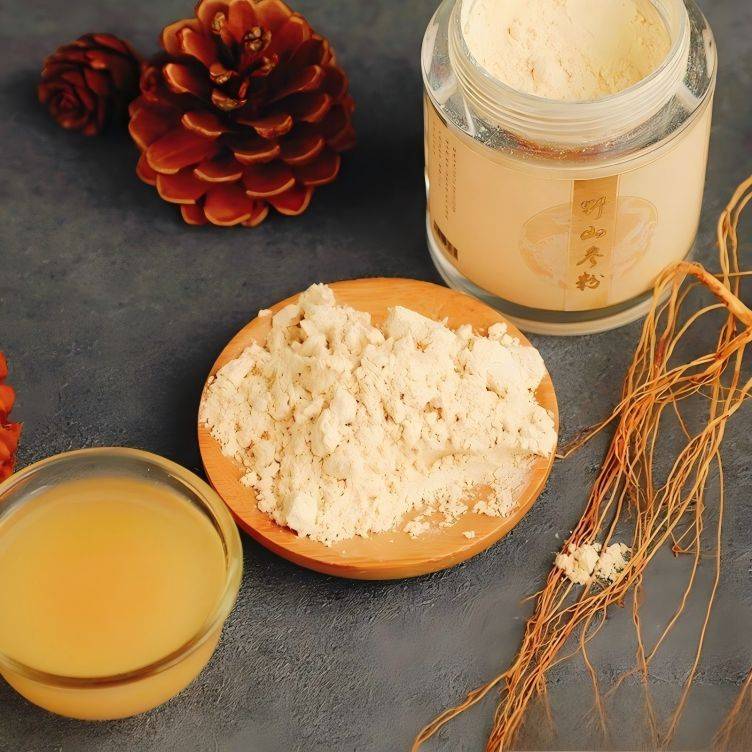抗菌効果のある高麗人参エキスの研究
抗生物質の抗菌性は、ここ数十年で大きく開発され、研究されている。抗菌効果は高いが、欠点もある。長期間抗生剤を使用すると、臨床的に抵抗力のある系統が増え、真菌と細菌の抵抗力が強化され、臨床感染症の死亡率も高まっている。さらに、抗生物質はアレルギー反応、毒性反応、重複感染を引き起こしたり、有害反応やその他の副作用を悪化させる可能性があります[1]。ペニシリンなどの抗生物質は他の副作用を引き起こす可能性がある。例えば、アミノグリコシドは腎臓や内耳に有害である。現在、医学界は薬剤耐性菌による細菌耐性と感染症という大きな問題に直面しています。現在、ほとんどの抗菌薬に耐性株が出現しており、耐性菌問題の解決が急務となっている[2]。
伝統的な漢方薬は、細菌感染症の治療に独自の抗菌机能を有し、薬剤抵抗性を受けにくく、薬剤抵抗性の発達を逆転させる効果がある。人参 is a traditional Chinese medicinal herb known worldwide. It is rich でactive ingredients とhas comprehensive functions. With in-depth research on のactive ingredients of ginseng, ginseng antibacterial activity has gradually attracted attention and become a research hotspot.
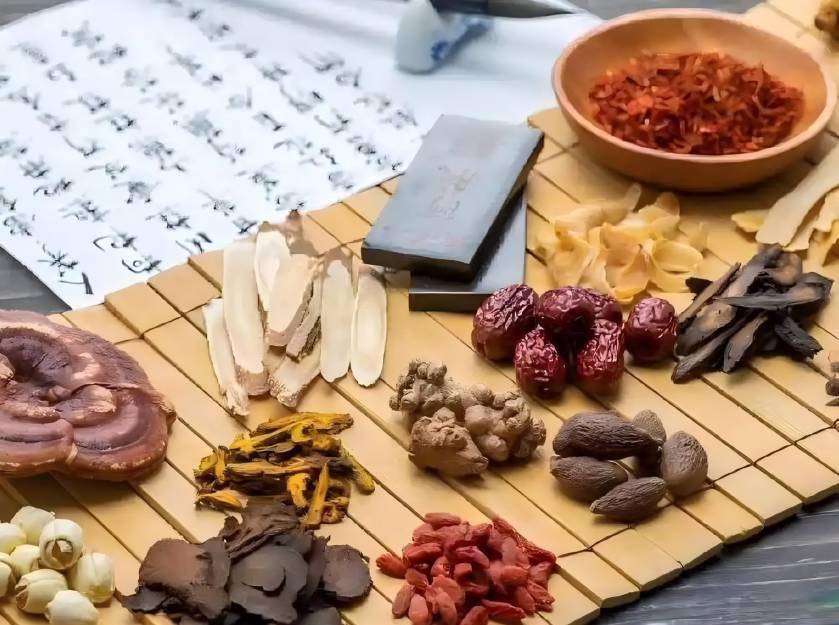
1細菌を抑制する伝統的な中国医学の利点
医療界は、安全で効果的な抗菌薬の開発に取り組んできました。抗生剤のさまざまな欠点に比べて、漢方医学は細菌抑制に独特の「魅力」を発揮している。伝統的な中国医学は広く利用可能です,自然,そして安価。それは抗炎症、抗ウイルス、および体の免疫機能を調節する効果があります。このため,細菌を抑制する伝統的な中国医学は、研究のホットスポットの一つとなっています[3]。中国は広大な国で、貴重な漢方薬が豊富です。これらのハーブは、感染制御と現代医学の両方でユニークな利点を持っています。中国医学は薬を服用する特別な方法を持っています,自然であります,多種多様に来て,そして、アクションの包括的なモードを持っています[4]。
天然物からの抗菌薬資源の探索と抗菌薬のスクリーニングは、国内外の学者の注目を集めています。中医学の研究が深まるにつれ、中医学には抗菌作用や静菌作用があるだけでなく、細菌の薬剤抵抗性を遅らせて除去する効果もあることがわかってきた[2、5]。zhang yingluoら[6]は、いくつかの病原性細菌に対する15の漢方薬成分の抗菌活性を研究し、zanthoxylum bungeanum maximの抽出物を発見した。atractylodes lancea、aquilaria sinensis、artemisia vulgaris、cardamomum zeylanicumは抗菌効果が高い。さらに、スイカズラの葉から抽出された有効成分、緑茶など、抗菌作用も優れています[7-9]。
2. 伝統的な中国医学の抗菌機構
臨床環境における一般的なグラム陽性薬剤耐性菌にはメチシリン耐性黄色ブドウ球菌(mrsa)がある。中国ではmrsa感染の発生率が高く、薬剤耐性結核菌やカンジダ菌の割合も増加している[10]。
薬剤耐性菌の増加は、臨床治療に大きな困難をもたらし、ヒトの健康に対する大きな脅威となっています。増え続ける薬剤耐性菌とその薬剤耐性の増加に直面して、早期発見と伝統的な漢方薬の治療上の利点は間違いなく最も重要です。現在、抗菌機構主汉方薬の4つを含みます:1)アイデンティティ細胞壁を毁损するおよび体細胞膜細胞または合成細菌細胞壁をを阻害細胞からコンテンツpullはレセプションを上げるrecordings from august 27の細胞壁をあげる原因守備機能を失う、膜の搬送機能を変えるを汚し、transmembrane情報送信[11]阻害する。
最終的に、細菌は低張性環境で破裂するか、電解質バランスの不均衡のために死ぬ。2)細菌のタンパク質合成への影響。タンパク質は細胞や生物の生命過程の主要な担い手である。タンパク質は体の重要な部分の形成に関わっています。細菌のリボソームとの相互作用はタンパク質合成を阻害し、細胞の生存に不可欠なタンパク質や酵素の合成を阻害する[11]。3)は遺伝物質であるdnaやrnaの合成に影響を与え、細菌の生殖や成長を阻害し、mrnaの翻訳に影響を与えてタンパク質を合成し、細菌の成長を阻害する[11]。4)細菌のバイオフィルムの形成を阻害する。伝統的な中国医学は、細菌のバイオフィルムによって引き起こされる感染症を効果的に予防し、治療することができます。これは、主にバイオフィルムの形成に必要なグルコシルトランスフェラーゼを阻害してバイオフィルムの形成を防ぐことによって達成されることが関連する研究によって示されている[12]。
3高麗人参の成分と機能
多くの種類があります汉方薬, and ginseng is a perennial herb that is one of the traditional precious Chinese medicinal materials. The cultivation of ginseng has a history of more than 1,600 years, and large-scale cultivation has also been carried out for more than 400 years[13] . Ginsenosides are considered to be the main active ingredient of ginseng and have always been a hot research topic for scholars and drug developers at home and abroad. There is no significant difference between the various types of ginseng in terms of their use. All ginsengs contain ginsenosides, and the pharmacological activity of ginseng is often attributed to ginsenosides. Most research on the pharmacology of ginseng focuses on ginsenosides[14] .
Ginsenosides can be divided into different types (protopanaxadiol-type ginsenosides, protopanaxatriol-type ginsenosides and oleanolic acid-type ginsenosides) according to the aglycone. These three types of ginsenosides contain many different components. Some ginsenosides are not only found in the roots and leaves of ginseng, but also in other parts of the plant (such as stems and leaves, above-ground stems, flowers, buds, fruits, and seeds). In addition, ginsenosides are not only found in ginseng and red ginseng, but also in other traditional Chinese medicines (such as Korean ginseng, American ginseng, Panax notoginseng, and Gynostemma pentaphyllum) [15]. Li Yang etアル[16] stated in their research progress on the chemistry and pharmacological effects of ginseng that the main components of ginseng that exert antibacterial effects are ginsenosides, ginseng polypeptides, ginseng polysaccharides, and volatile oils. Chen Qun ら[17] showed that ginseng polysaccharides have immunostimulatory and antitumor effects, and have a certain degree of bactericidal effect.
4. ギンセノシドの静菌効果と研究の進展
4.1. 細菌を阻害するギンセノシドの研究
ギンセノシドの静菌効果の研究には様々な研究方法や細菌の選択肢がある。細菌の種類や方法の選択は、静菌効果の研究結果と大きく関係しています。ら早ければ1995年、李智屏[18]microcalorimetry採用しての効果の研究をしてから人参に黄色ブドウ球菌細菌代谢を促进の観点の関係を示す曲線を得濃度の細菌の伸び率はマイナス2.6%、高麗人参の高麗人参が体内の代谢を促しを指す黄色ブドウ球菌。
cao junlingら[19]は、ギンセノシドrg1、rdおよびrb1が大腸菌の生物学的熱産生に及ぼす影響を調べた。その結果、ギンセノシドrdは大腸菌の熱産生を有意に阻害するが、rg1とrb1の阻害効果は弱いことが示された。説明:高麗人参サポニンrdは、バクテリアのエネルギー代謝を調節して大腸菌を抑制することができます。高麗人参エキスと高麗人参サポニンrblを牛に投与した後、体の黄色ブドウ球菌に対する抗体価が高くなり、リンパ球の増殖力が強くなり、単量体サポニンrblの効果が良いという研究結果が出た人参エキスまた、rb1には優れた抗菌作用があるだけでなく、黄色ブドウ球菌による炎症もある程度軽減する[20]。まだ同臨床研究によると、幸福感が入院患者で多剤耐性下呼吸器を起こした菌は唐遇される感染も12胜Jia Ganshen病原菌はも有効に脱落できず,熱症状をある程度押し戻すことに改善と体内で白血球が著しく低下し、body&した旨を示す#39の炎症は徐々に減少した。「百戸加甘神湯」は、多剤耐性菌の毒性と活力を抑制・低下させ、体に定着させることができる[21]。
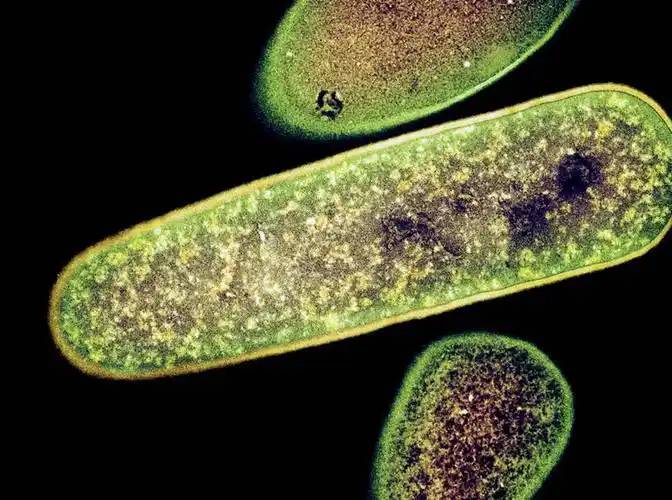
Liu Fangfang et al. 。[22]studied the antibacterial mechanism of ginseng total saponinsFusariumに対するsolani。その結果、高麗人参の幹と葉の総サポニンは、細胞膜の透過性を変化させ、細菌内の大量のタンパク質と細胞内物質の排出を誘導して、細菌活性を抑制することが分かった。dong chunlei[23]は、大腸菌と黄色ブドウ球菌を試験株として用い、ルバーブ酸、マグノロール、バイカリン、人参サポニン(ギンセノシドとギンセノシドを含む)の抗菌効果を研究し比較した。その結果、ルバーブ酸、マグノロール、バイカリンが大腸菌の細菌液に対して抑制効果を示すことが示された。高麗人参サポニンは、3種に比べて大腸菌に対する抑制作用が強い。同時に、5種類のプロトパナキサジオールのサポニンモノマーの抗菌作用を比較したところ、ギンセノシドrcが大腸菌に対する阻害効果が最も高いことがわかりました。その他の研究では、ベルベリン塩酸、ギンセノシドrb1、バイカリン、クロロゲン酸はいずれも大腸菌や黄色ブドウ球菌に対して一定の抗菌活性を持ち、その抗菌活性に濃度依存性があることが示されている。また、ギンセノシドrb1とベルベリン塩酸塩は、同じ薬剤濃度でクロロゲン酸やバイカリンよりも静菌効果が高い[24]。
4.2細菌バイオフィルム研究のギンセノシド阻害
Bacteria with biofilms are highly resistant to antibiotics and the host immune defense system. The 抵抗exhibited by bacterial biofilms may be due to the action of some bacteria within the biofilm. Under specific survival conditions, these bacteria can acquire virulence genes, drug resistance genes, etc., thereby exhibiting a protective バイオフィルムphenotype, which in turn alters various physiological functions such as multiple drug resistance [23]. Existing studies have shown that there are two specific drug resistance mechanisms: those that are due to the production of inactivating enzymes (or deactivating enzymes) by the bacteria and changes in the target site of the antibiotic, and those that are due to the impermeability of the bacterial cell membrane or the enhanced function of the pump-out system on the cell membrane and the formation of a bacterial biofilm. These mechanisms of drug resistance are often less specific, and it is more difficult to obtain effective drugs for the study of drugs for bacterial biofilms. [25] .
現在、細菌抵抗性の増加、薬剤耐性株の増加、細菌感染症の治癒の難しさは、すべて細菌バイオフィルムの形成と密接に関連しています。特に黄色ブドウ球菌は、軟組織、血管内装置、医療機器などの表面にバイオフィルムを形成しやすく、治療がより困難になる[26-27]。抗生物質は細菌に対して優れた殺菌効果を持つが、いくつかの細菌のバイオフィルムに対する阻害効果は有意ではない。また、バイオフィルムはサブ濃度の抗生物質の作用により遺伝子変異を起こしやすく、薬剤耐性遺伝子の産生を誘導し、バイオフィルムのシグナル伝達の特性により細菌のバイオフィルムの薬剤耐性を高める[28]。そのため、抗生物質の機能を阻害するバイオフィルムによる耐性は、現在研究の焦点となっており、また難しい問題となっています。
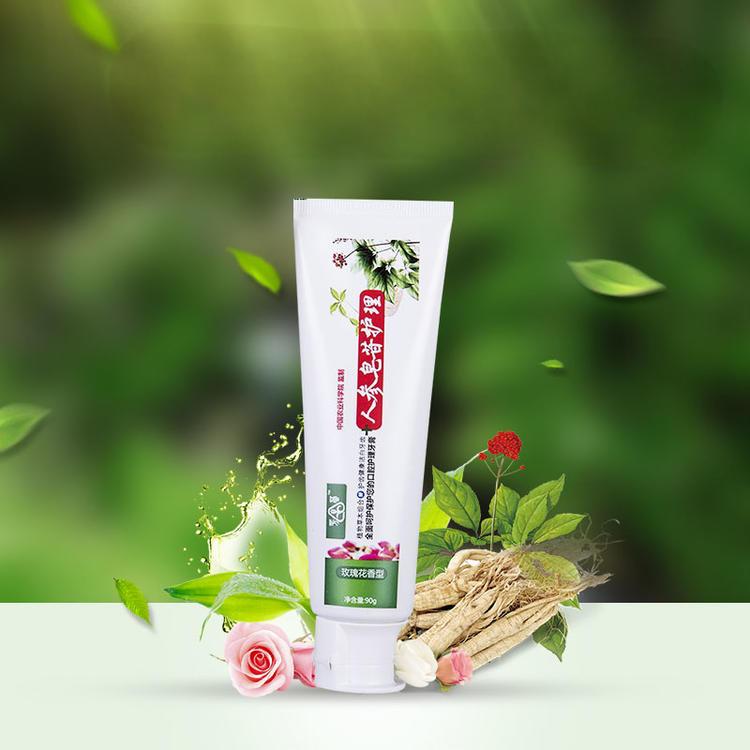
dong chunlei[23]は、escherichia coliと黄色ブドウ球菌のbbfモデルを用いて、ギンセノシドは黄色ブドウ球菌のバイオフィルムに対して弱い阻害効果を持つが、大腸菌のバイオフィルムに対しては強い阻害効果を持つことを発見した。ギンセノシドrcおよびrb2は大腸菌のバイオフィルムを効果的に阻害することができる。an jihongらは、黄色ブドウ球菌に対する高麗人参サポニンの抗菌機構を調べた[29]。その結果、Rh2効果がなかった原因でもあるブドウ球菌の拡散が有効形成を抑える黄色ブドウ球菌生体膜の表情を抑える遺伝子ica (ica A、ica B、ica C)の調節によって多糖類adhesins、生体膜の癒着能力を抑えることができる。
4.3高麗人参サポニンと他の薬剤は、相乗的な抗菌作用を持っています
zhang et al. [30]usedginseng saponin Rh2 in combination with ciprofloxacin to treat Staphylococcus aureus, and the results showed that Rh2 can promote the bactericidal effect of ciprofloxacin by inhibiting the expression of the NorA gene. Recent studies have found that sub-inhibitory concentrations of gentamicin, ciprofloxacin and vancomycin have no significant inhibitory effect on Staphylococcus aureus biofilms, but the combination of ginsenoside Rh2 and antibiotics can promote the inhibitory effect of the three antibiotics on biofilms, and have a synergistic effect on the inhibition of biofilms [29]. Dong Chunlei [23] studied and compared the antibacterial effects of ginsenosides in the study of the inhibitory effects of ginsenoside monomers and ginseng monomers in combination with other traditional Chinese medicine monomers on bacterial biofilms. not only proved that ginsenosides inhibit bacteria and bacterial biofilms, but also demonstrated that the combination of ginsenosides with drugs such as rhubarb acid, magnolol, and baicalein has a synergistic and additive effect, which can significantly enhance the ability to inhibit bacteria and bacterial biofilms.
ginsenoside抗菌研究の5つの制限と展望
ギンセノシドは、細菌や細菌のバイオフィルムを阻害する強い活性を示す。これらは現在の細菌の薬剤耐性の問題を解決するのに役立つが、ギンセノシドに関する現在の研究にはまだ多くの限界がある。これまでの研究で、ギンセノシドは大腸菌や大腸菌のバイオフィルムに対して強い抑制効果を持つが、完全に除去することはできないことが分かっている。ギンセノシドは黄色ブドウ球菌(staphylococcus aureus)に対して弱い阻害効果を示すが、他の多くの細菌に対する阻害効果はまだ知られていない。また、漢方薬の抗菌法に対する深い研究が不足しているため、漢方薬の特徴を反映した完璧な体外抗菌評価法がない。これは現在のジンセノシドの研究の限界でもある。
ギンセノシドの抗菌特性は、細菌種によって異なる効果を持つ。異なる細菌種は、異なる薬剤耐性メカニズムと薬剤耐性の程度を持っています。抗菌効果の強さは、他の要因(培地など)にも関係しています。実験では、in vivo環境を模擬するために作製した培地で得られた結果、病原性細菌がギンセノシドに対して強い抵抗性を示すことが示された。しかし、複雑な内部環境を完全にシミュレートすることは困難であり、in vitro培養では結果を妨げる多くの現象に遭遇する可能性があります。試験管内での抗菌活性の研究は、常に多くの要因に影響されます。in vivoとin vitroでは実験環境が異なるため、実験で得られたギンセノシドの抗菌効果に違いがある可能性がある。したがって、インビトロでは、ギンセノシドの抗菌効果をより効果的に発揮するために、生体内環境をできるだけ包括的にシミュレートする必要があります。
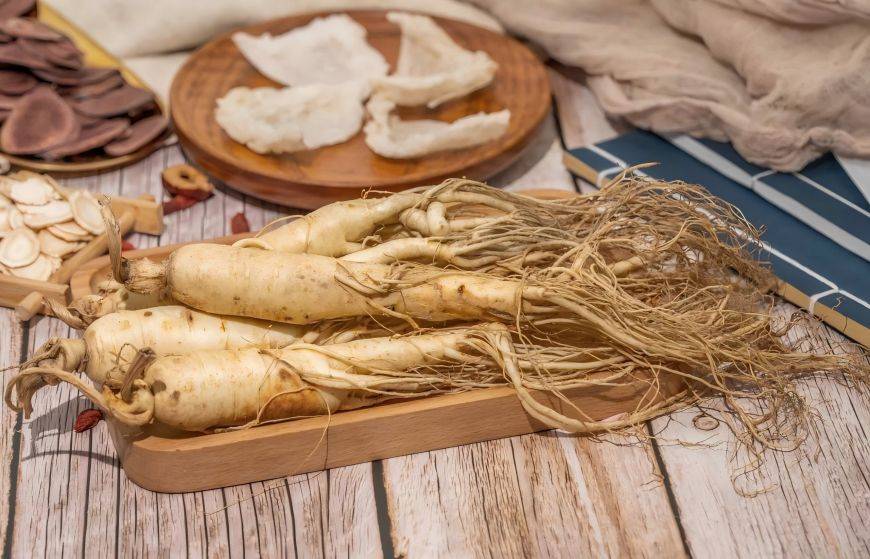
現在、個々のギンセノシドの抗菌効果についての研究が始まっているが、その組成や用量についての研究はまだ不十分であり、今後の研究で強化する必要がある。ジンセノシドには双方向の規制効果があり、適切な条件の制御や薬剤の合理的な組み合わせと使用(適合性)を通じて、より期待される治療効果をどのように達成するかも、今後の研究の重要な方向性です。ギンセノシドの抗菌作用の研究や関連する新製品の開発は、臨床治療のニーズに応えるだけでなく、china &のさらなる発展にも資するものです#39; s、人参産業だ。したがって、高麗人参の抗菌メカニズムの研究は、高麗人参の開発と利用に不可欠である。ギンセノシドが細菌の密度知覚シグナル伝達系の制御、細胞内シグナル伝達、および関連遺伝子の発現にどのように介入するのかは、ギンセノシドの研究の焦点である'細菌のバイオフィルムの形成に介入する。
参照
一石二鳥です黄木蓮の。[1]有害な薬物反応と抗生物質の合理的な使用のための臨床的措置に関する議論[j]。^ a b北村(2017)、145- 145頁。
【2】李瑞明、雷zhaoxia。細菌抵抗性と闘うための戦略:細菌抵抗性を遅らせ、逆にし、薬剤耐性菌によって引き起こされる感染症を治療するための伝統的な中国医学の使用に関する研究[j]。医学と哲学(臨床意思決定フォーラム版)、2006年、27(8):45-7。
[3] hu jinting, ma ping, chen yao, et al。漢方薬とその有効成分による細菌バイオフィルムの予防と制御に関する最近の研究[j]。2016年(平成28年)12月12日:ダイヤ改正。
【4】李アナ、陶慶春。漢方薬抗菌の研究状況と考え方[j]。^「international journal of laboratory medicine, 2014, 35(2): 198-200」。international journal of laboratory medicine(2014年). 2014年3月25日閲覧。
【5】斉建軍、王文林、李樹徳。日本住血吸盤におけるnox3誘導肝線維症に対するギンセノシドrg1の影響[j]。中国病原生物学会誌,2017,12(5):385-8,393。
[6]張英羅、殷蔡平。いくつかの植物病原性真菌に対する漢方エキス15種類の抗菌活性に関する予備研究[j]。journal of northwest a & f university (natural science edition), 2005, 33(s1): 175-7。
[7]呉雪、白燕。スイカズラ葉からの薬用成分抽出と抗菌試験[j]。^ a b c d e f g hi『漢書』第23巻、448-449頁。
【8】銭麗紅、陶燕、謝京。黄色ブドウ球菌および緑膿菌に対する茶ポリフェノールの静菌機構[j]。 微生物学公報」を発表した。2010年37(11):1628-33。
[9] fan jia, tao yuwei, han xu, et al。緑茶の抗菌効果の実験的探索とその応用[j]。^『人事興信録』人事興信録、人事興信録、2018年(平成30年)6月6日。
[10] zhang shuai, zhang shunwen, wu fang, et al。ユビキチン様プロテアソーム系によるモノイソニアジド耐性を有する結核菌の薬剤耐性機構の解明[j]。中国病原生物学会誌,2017,12(6):489-94。
[11] shi w .伝統的な中国医学の有効成分の抗菌メカニズムに関する研究[j]。科学技術情報,2011(5):37,49。
[12] xi qp, tang ry, wang qf, et al。人工口腔内におけるgallnutの抗菌プラークバイオフィルム効果に関する研究[j]。 journal of endodontology and periodontology, 2004, 14(3): 148-50。
[13] zhao yu, yang fei, zhang xin, et al。高麗人参の生育期における根の酸化還元酵素の活性変化に関する研究[j]。遼寧省伝統医薬ジャーナル、2012、39(8):1586-8。
[14]柳Di。hek-293細胞における酸化ストレス損傷に対するギンセノシドの相乗的阻害とその機構の研究[d]。2016年吉林大学に决定。
海南[15]王だ。ギンセノシドの薬理学的研究の進展[j]。 中国の臨床薬理学と治療学,2006,11(11):1201-6。
[16] li yang, zhang tiejun, liu suhuang, et al。高麗人参の化学組成と薬理作用に関する研究[j]。^ a b c d e f g hi(2009年)、164- 164頁。
【17】陳群、劉家昌。高麗人参多糖類、アストラガルス多糖類、クコ多糖類の研究を進めています。^『仙台市史』通史館、2001年(平成13年)、39-41頁。
[18] li zhiping, yu xiufang, hang hu, et al。黄ブドウ球菌の代謝促進に関する研究[j]。journal of physical chemistry, 1995, 12(5): 468-71。
曹宰[19]の。ギンセノシドrg1、rb1およびrdの大腸菌の生物学的熱活性に対する影響[a]。 中国医薬協会、河北省人民#中国医薬協会の2008年年次総会と第8回中国薬剤師週間の議事録[c]。中国医薬協会、河北省人民#2008年39;政権は、。2771-4。
【20]林Fengqiang。乳牛の黄色ブドウ球菌に対するワクチンに対するギンセノシドの免疫アジュバント効果[d]。2002、浙江大学。
[21]余国東,彭智雲。baihu jiaren tangによる多剤耐性菌による下気道感染症治療の臨床観察[j]。 新中国医学、2012年 44 (5): 31-2。
[22] liu fangfang, zhang aihua, lei jingjie, et al。fusarium solaniにおける人参の茎・葉の総サポニンの阻害作用とそのメカニズム[j]。2018年吉林農業大学紀要 40(1面) 85 -91。
[23]洞Chunlei。ギンセノシドモノマーの細菌バイオフィルムへの阻害効果と他の漢方薬モノマーとの併用に関する研究[d]。2011年、長春中医薬大学教授。
[24] yin liangjun, zhou zhenqi, shao yuan, et al。ベルベリン塩酸、ギンセノシドrb1、バイカリン、クロロゲン酸の大腸菌および黄色ブドウ球菌に対する抗菌作用に関する研究[j]。2016年医療審査第22(24):4969-72に。
[25]劉jueling, yang weifeng, wang yi。細菌バイオフィルムと界面活性剤の抗菌活性に関する研究[j]。chinese journal of pathogenic biology, 2016, 11(9): 858-60, appendix 3。
[26] ドラッグストアジョシュ、 Horswill AR。 Staphylococcusaureus生体膜: バイオフィルム分散の最近の進展[j]。 前細胞は微生物に感染し 2014年(4): 178.
【27】 McCartby H Rudkin JK、 黒 NS個の、 et al. Methicillin resistance and the biofilm ね in 黄色ブドウ球菌staphylococcus aureus [j]。 前細胞は微生物に感染し 2015年(5): 1.
[28] 別名ST 土師SH。 クロルヘキシジンの存在下でのpseudomonasaeruginosaの抗生物質誘導バイオフィルム形成のサブマイク[j]。 braz j microbiol 2015年 46(1面) 149-54。
[29] an jihong, lu weiling, zhang yongzhou, et al。黄色ブドウ球菌によるバイオフィルム形成に対するギンセノシドの影響[j]。^『仙台市史』仙台市教育委員会、2018年(平成30年)7月、56頁。
[30] チャン・J 太陽 Y 王 Y et al. Non-antibiotic エージェントginsen- oside 20(s) - rh2 poterntial norainhibitorとしてシプロフロキサシンinvitroおよびinvivoの抗菌効果を増強した[j]。 eur j phar - macol, 2014年(740)です 277-84。


 英語
英語 フランス
フランス スペイン
スペイン ロシア
ロシア 韓国
韓国 日本
日本